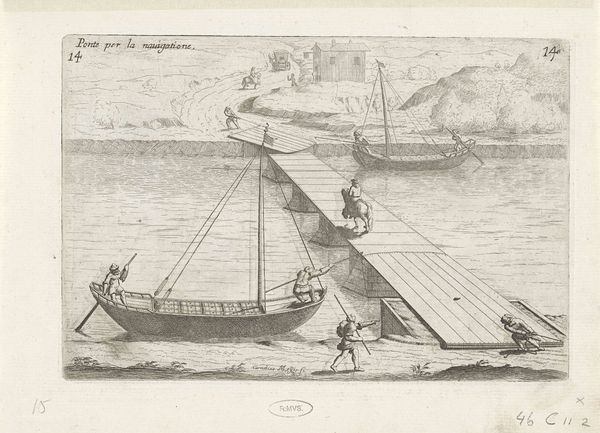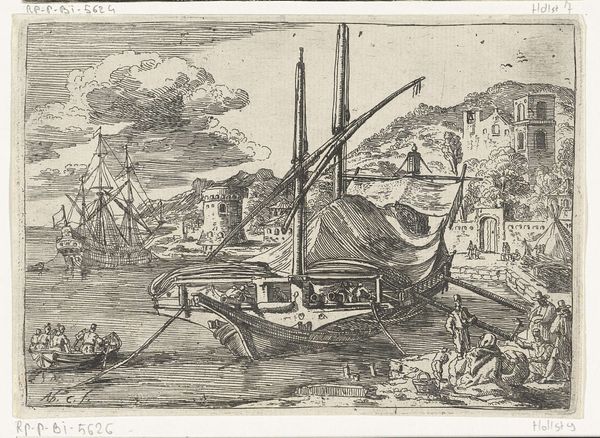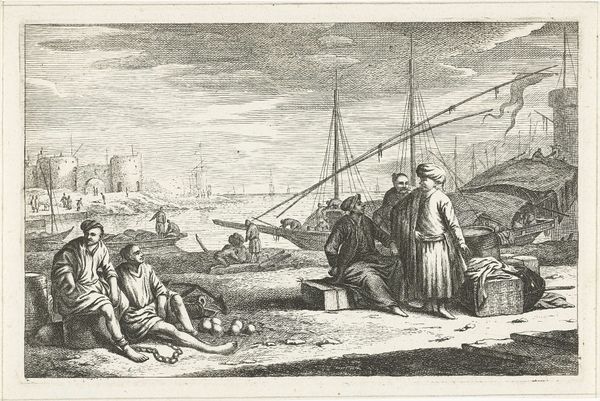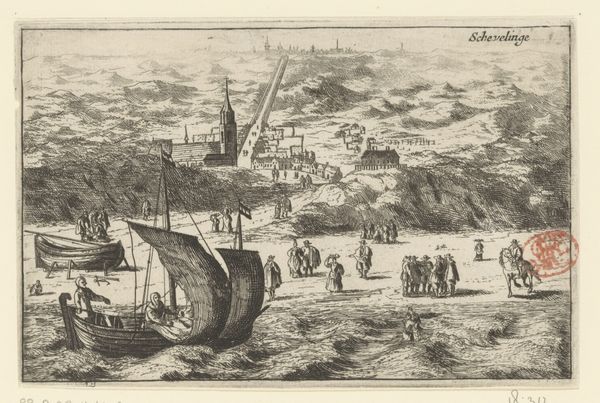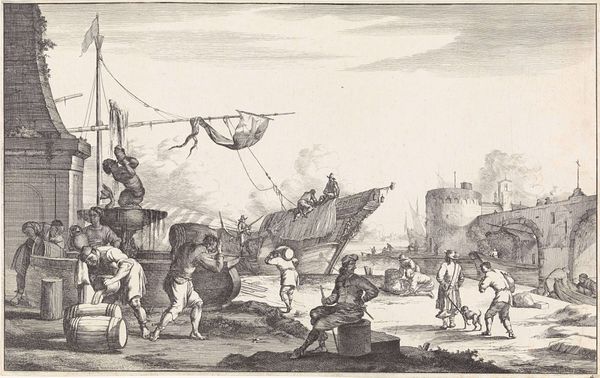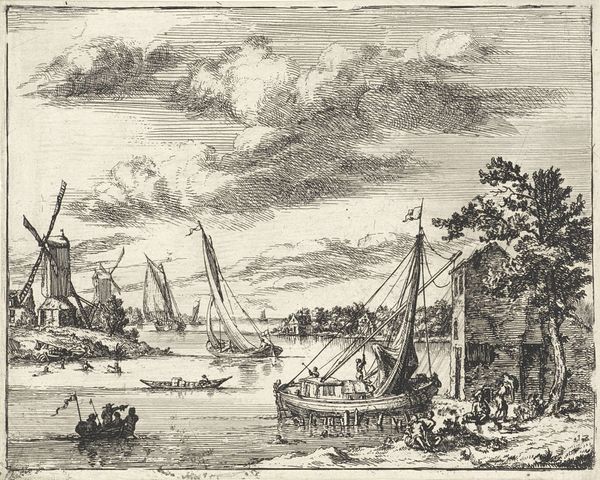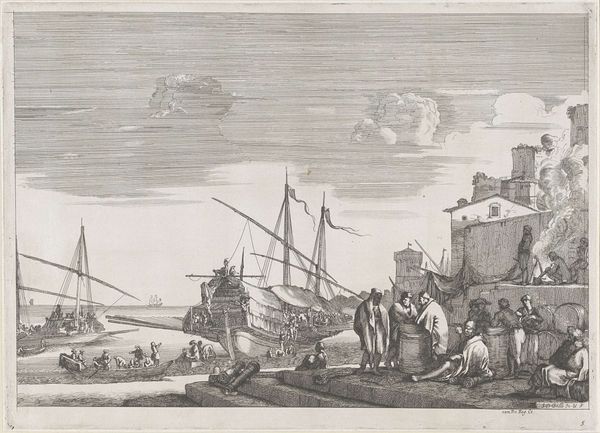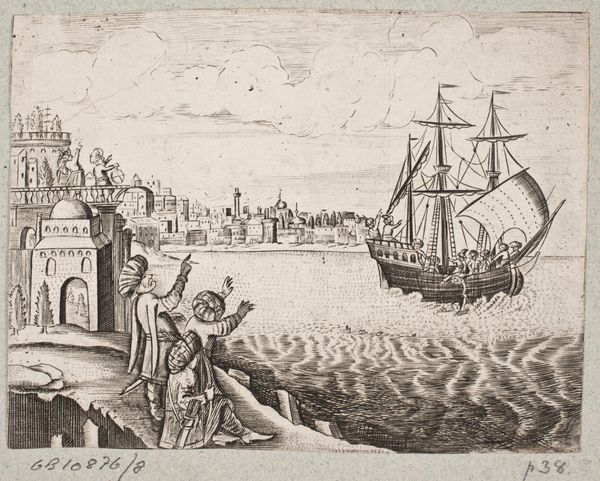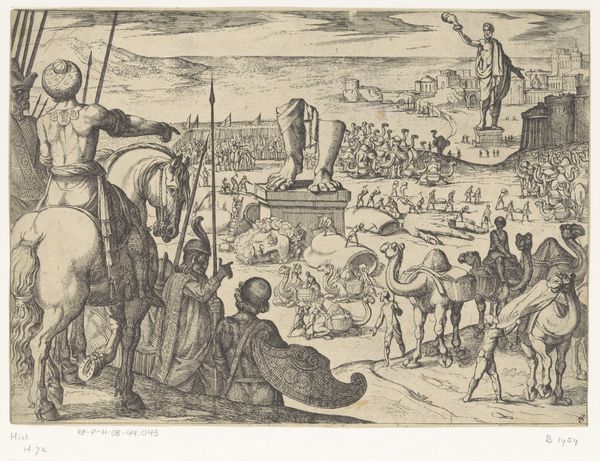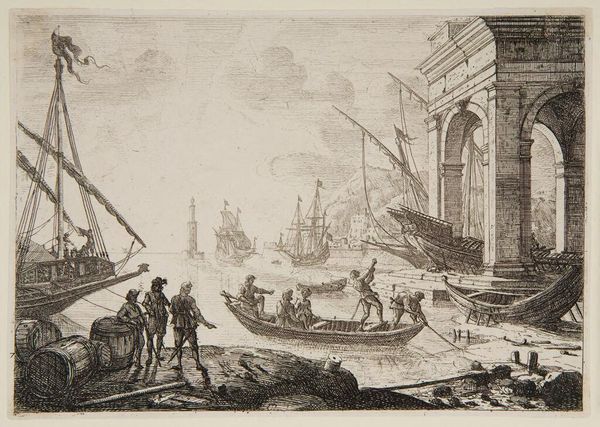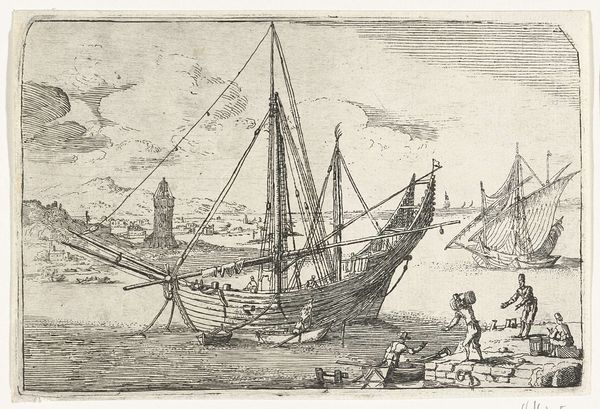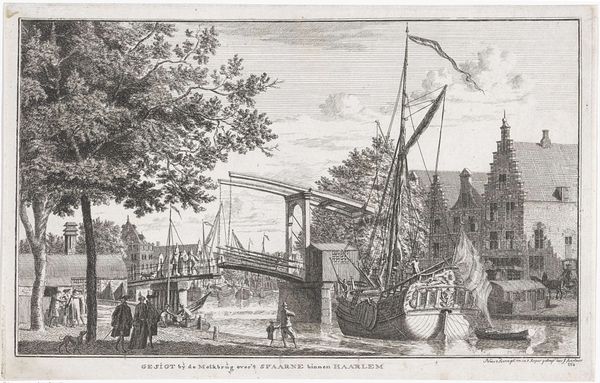
Dimensions: height 442 mm, width 700 mm
Copyright: Rijks Museum: Open Domain
Editor: This is Giuseppe Vasi’s "View of the Tiber and Aventine Hill in Rome" from 1771, an engraving that presents a detailed cityscape. It seems very industrious, almost a romantic depiction of labor. What strikes you most about this piece? Curator: As a materialist, I find the depiction of labor and the implied social structure fascinating. Note the different forms of labor represented: from the figures manually unloading the boats, to the implied commerce and transport via the Tiber. It asks us to consider not only *what* is being made and moved, but *who* is doing the making and moving, and under what conditions. Editor: That’s a good point. I hadn't thought about it like that. Does the choice of engraving as a medium enhance that focus? Curator: Absolutely. Engraving, a process requiring skill, time, and a very specific set of tools, highlights the materiality of artmaking. Every line, every shadow, is a result of deliberate physical action. This connects to the physical labor represented in the scene. Vasi is representing a social system *and* engaging in one through the production of the print. How might the availability of prints impact consumption and access? Editor: It democratizes art, making cityscapes like these accessible to a broader audience than unique paintings would be. And that access influences what they consume, and think about... Curator: Precisely. The print becomes a commodity, shaped by the material processes of its creation, influencing the consumption habits and perceptions of its viewers, thus fueling the economy and, potentially, reinforcing or challenging existing social structures. Editor: I hadn’t thought about the layers of labor embedded within it, both in the scene depicted and in the production of the engraving itself. Thanks! Curator: It shows how close attention to the materiality of art can reveal so much about its broader social and economic context. A truly insightful piece!
Comments
No comments
Be the first to comment and join the conversation on the ultimate creative platform.
